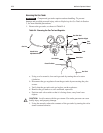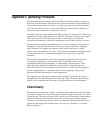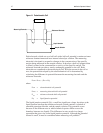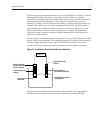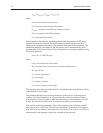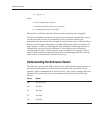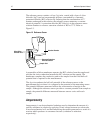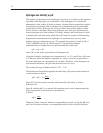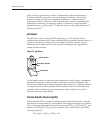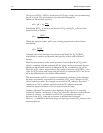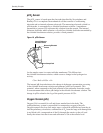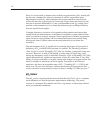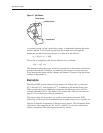
IĆ6 800 Series Operator's Manual
The reference sensor contains a silver (Ag) wire, coated with a layer of silver
chloride (AgCl) and an ion permeable polymer, surrounded by a saturated
potassium chloride (KCl) solution. By ensuring that the concentration of Cl
–
remains unchanged in the solution, the reference sensor maintains a constant
electrical potential. A potassium chloride (KCl) block is in the reference sensor
solution chamber to ensure a saturation solution of KCl at 37°C. Refer to
Figure I-3.
Saturated Potassium
Chloride Solution
Solution Chamber
Sample Path
Silver/Silver
Chloride Wire
A permeable cellulose membrane separates the KCl solution from the sample and
provides the ionic conduction between the KCl solution and the sample. The
membrane completes the conductive path to the sample from the fixed half-cell
potential that is required for the measurement.
The Ag wire conducts the half-cell potential of the reference sensor to the
measurement device where it is compared to the potential of the measuring sensor.
The potential difference measured reflects the concentration of analyte in the
sample. Although the reference sensor provides a constant potential from sample to
sample, the potential difference measured between sensors varies with each
sample.
Amperometry is an electrochemical technique used to determine the amount of a
specific substance in solution by applying a fixed voltage between two electrodes
in an electrochemical cell, and then measuring the current generated as a result of a
reaction which produces or consumes electrons (oxidation or reduction,
respectively).



